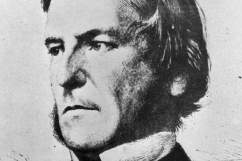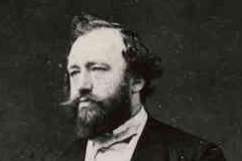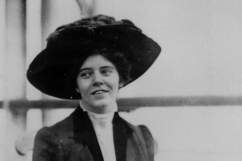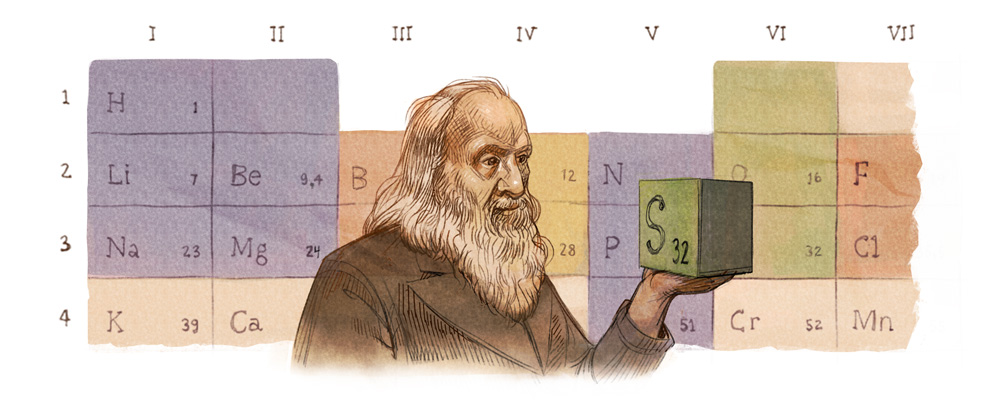
Google is honoring Dmitri Mendeleev with a Google Doodle on the Russian chemist’s 182nd birthday. (Robinson Wood/Google)
Dmitri Mendeleev, the Russian chemist and inventor, would have turned 182 on February 8, and Google is celebrating his birthday with a Google Doodle.
Mendeleev is best known for discovering periodic law in 1869.
Here’s what you need to know about Mendeleev:
1. Mendeleev Was Born in Siberia & Moved Across the Entire Russian Continent When He Was a Child to Get a Better Education
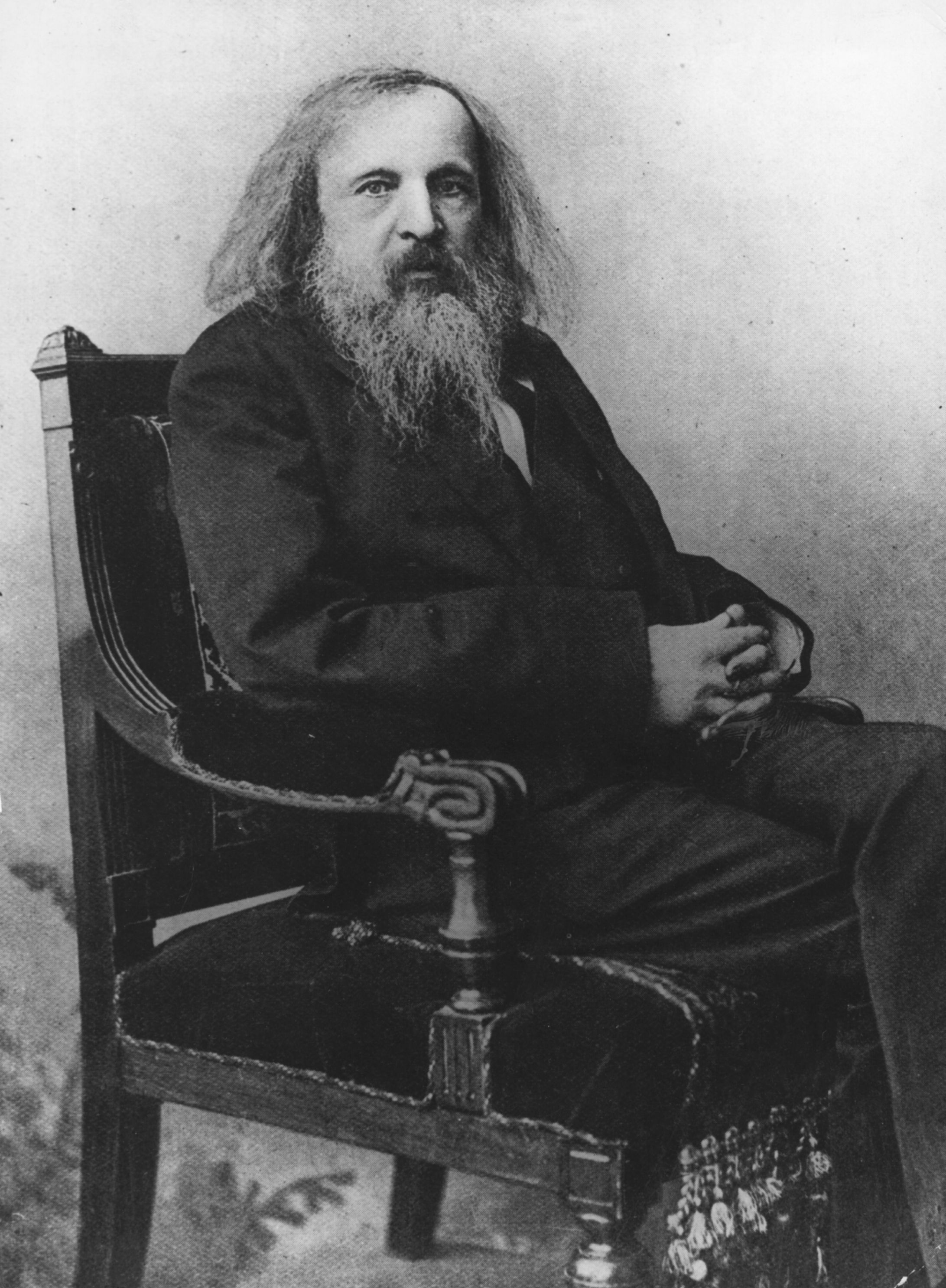
(Getty)
Dmitri Mendeleev was born February 8, 1834, in Tobolsk, Siberia. He died February 2, 1907, in Saint Petersburg.
Mendeleev’s father, a professor who taught fine arts, politics and philosophy, went blind around the time of his birth and died in 1847, according to Biography.com. His mother worked as the manager of her family’s glass company to support them, until it burned down in 1848. They then moved across the Russian continent, first to Moscow and then to St. Petersburg so Dmitri and his siblings could receive a better education.
He was the youngest of his several siblings, but the exact number isn’t known, ranging from, 11 to 17.
2. He Studied at Saint Petersburg University & Became a Professor
Mendeleev studied at the University of Saint Petersburg, according to FamousScientists.org.
“By the time he was 20, Mendeleev was showing his promise and publishing original research papers. Suffering from tuberculosis, he often had to work from bed. He graduated as the top student in his year, despite the fact that his uncontrollable temper had made him unpopular with some of his teachers and fellow students,” the website explains.
He became a teacher in Crimea in 1855, before returning to Saint Petersburg, where he completed his master’s degree in chemistry in 1856.
“It is the function of science to discover the existence of a general reign of order in nature and to find the causes governing this order,” Mendeleev wrote. “And this refers in equal measure to the relations of man – social and political – and to the entire universe as a whole.”
3. He Invented His Version of the Periodic Table in 1869
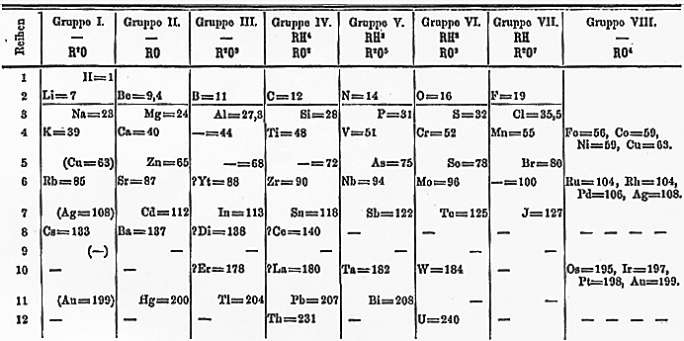
Mendeleev’s periodic table. (Wikipedia Commons)
Mendeleev is best known as the father of the Periodic Table, which he invented in 1869. He organized the then 56 elements by showing how they were related to each other in a distinct pattern, letting them fall into periods, according to atomic mass and valence, Google says.
According to FamousScientists.org:
He wrote the names of the 65 known elements on cards – much like playing cards – one element on each card. He then wrote the fundamental properties of every element on its own card, including atomic weight. He saw that atomic weight was important in some way – the behavior of the elements seemed to repeat as their atomic weights increased – but he could not see the pattern. Convinced that he was close to discovering something significant, Mendeleev moved the cards about for hour after hour until finally he fell asleep at his desk. When he awoke, he found that his subconscious mind had done his work for him! He now knew the pattern the elements followed.
Mendeleev later said, “In a dream I saw a table where all the elements fell into place as required. Awakening, I immediately wrote it down on a piece of paper.”
“Scholars had attempted to organize the elements into a table before, but Mendeleev’s work extended beyond mere chart-making. Mendeleev used the logic of his table to argue for the existence of yet-to-be discovered elements (like gallium and germanium), and even to predict their behaviors,” Google explains. “Some of these predictions were wrong, but the basic principles behind his periodic organization continue to stand at the foundation of modern chemistry. The periodic table of the elements (now with 118 elements and counting) adorns science classrooms worldwide.”
4. He Was Married Twice & Had 6 Children
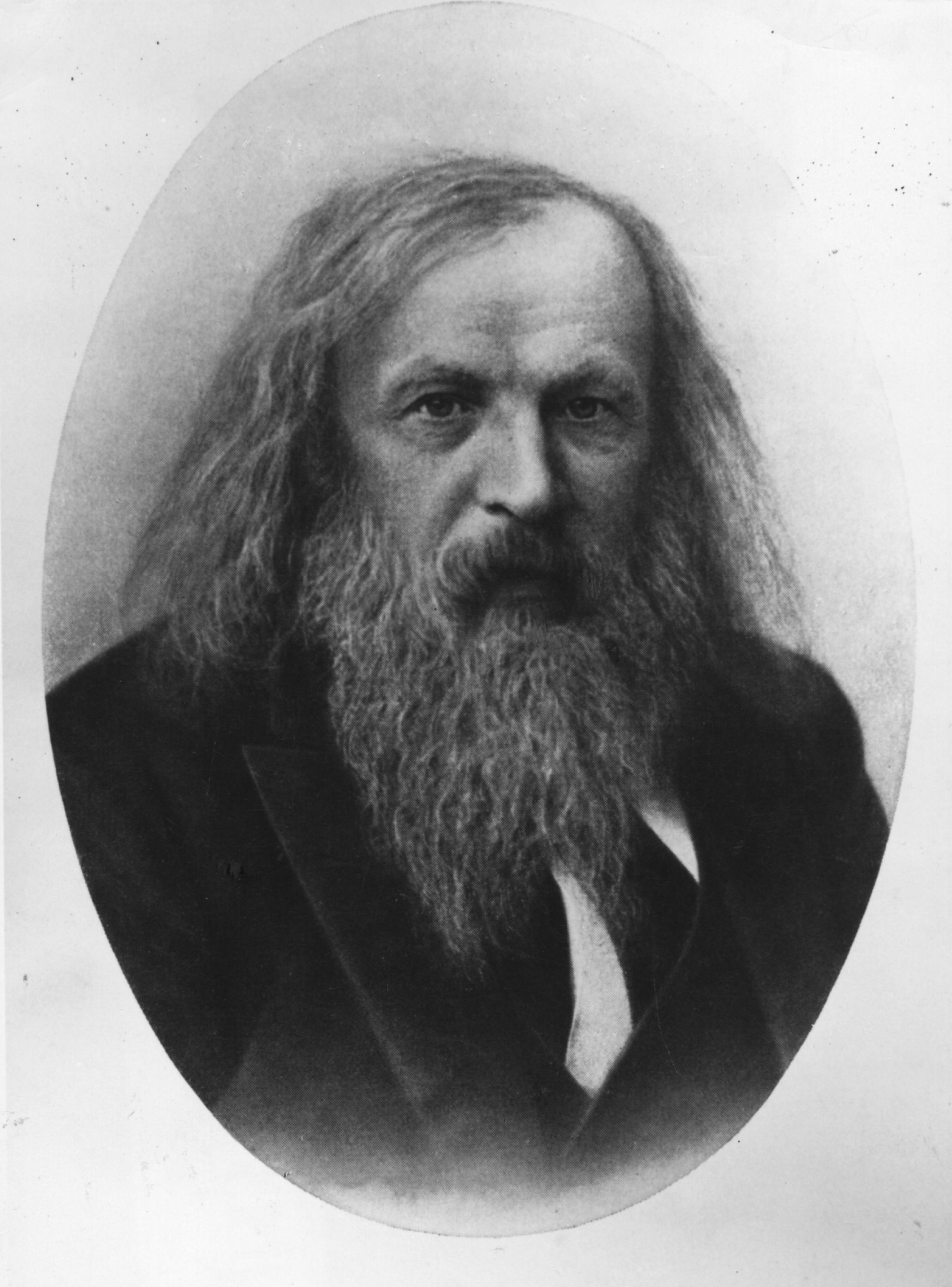
Mendeleev, circa 1984. (Getty)
Mendeleev was married twice, first to Feozva Leshcheva from 1862 to 1871 and then to Anna Ivanova Popova.
He had six children, including a son, Vladimir, and a daughter, Olga, with Feozva, and a son, Ivan, twins and a daughter, Lyubov, with Anna. His son Vladimir was a sailor who took part in Nicholas II’s Eastern journey and his daughter, Lyubov, married the famed Russian poet Alexander Blok.
Mendeleev died of influenza in 1907 at the age of 72.
5. The Element Mendelevium & a Crater on the Moon Bear His Name, Along With Many Other Memorials
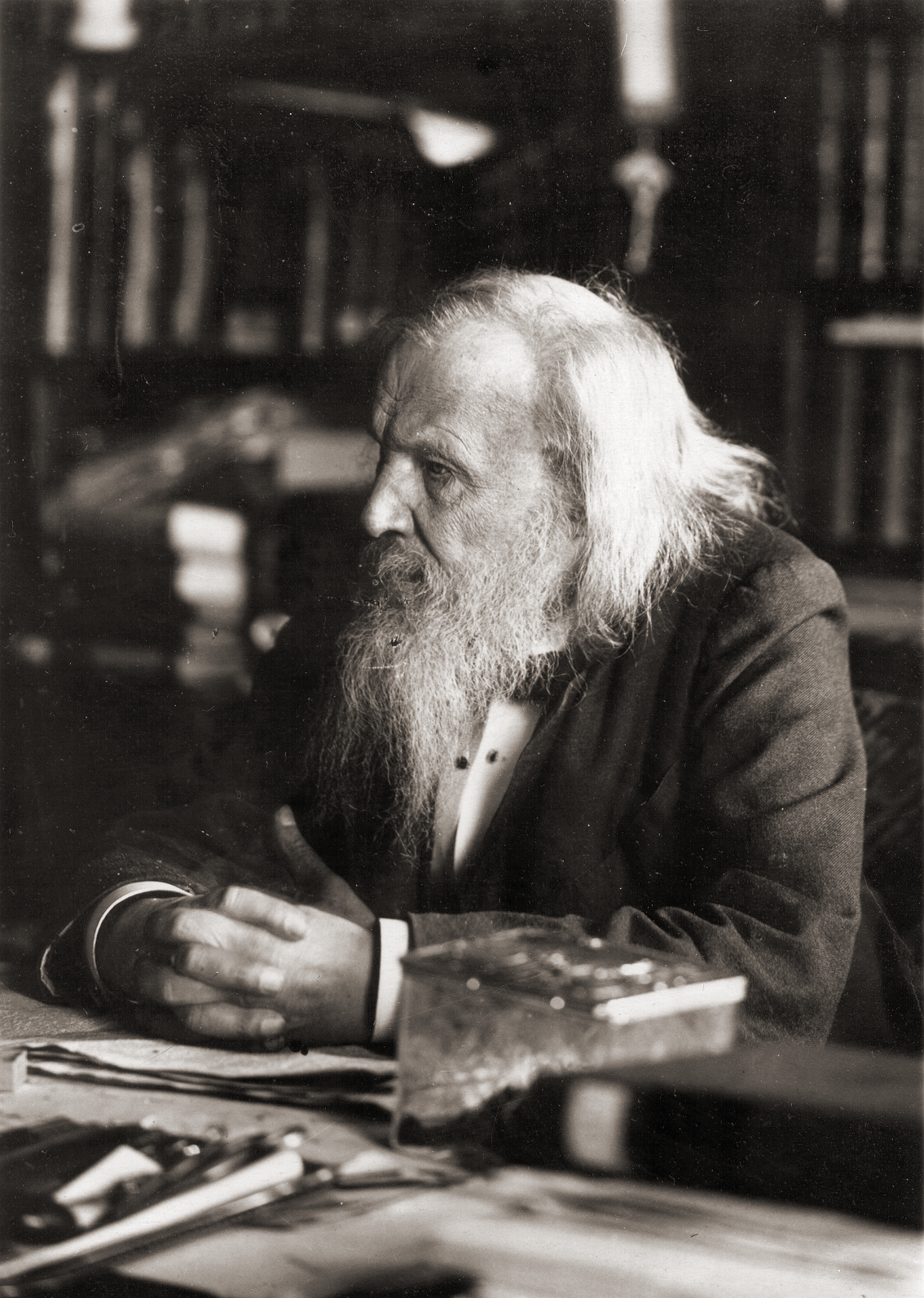
Mendeleev in 1897. (Wikpedia Commons)
The synthetic chemical element mendelevium is named for him. A crater of the moon is also named for him. The large lunar impact crater is located on the far side of the moon, as seen from Earth.
His name is memorialized in many other places, including the National Metrology Institute in Saint Petersburg, a building at Saint Petersburg State University and the Mendeleev University of Chemical Technology of Russia in Moscow.
